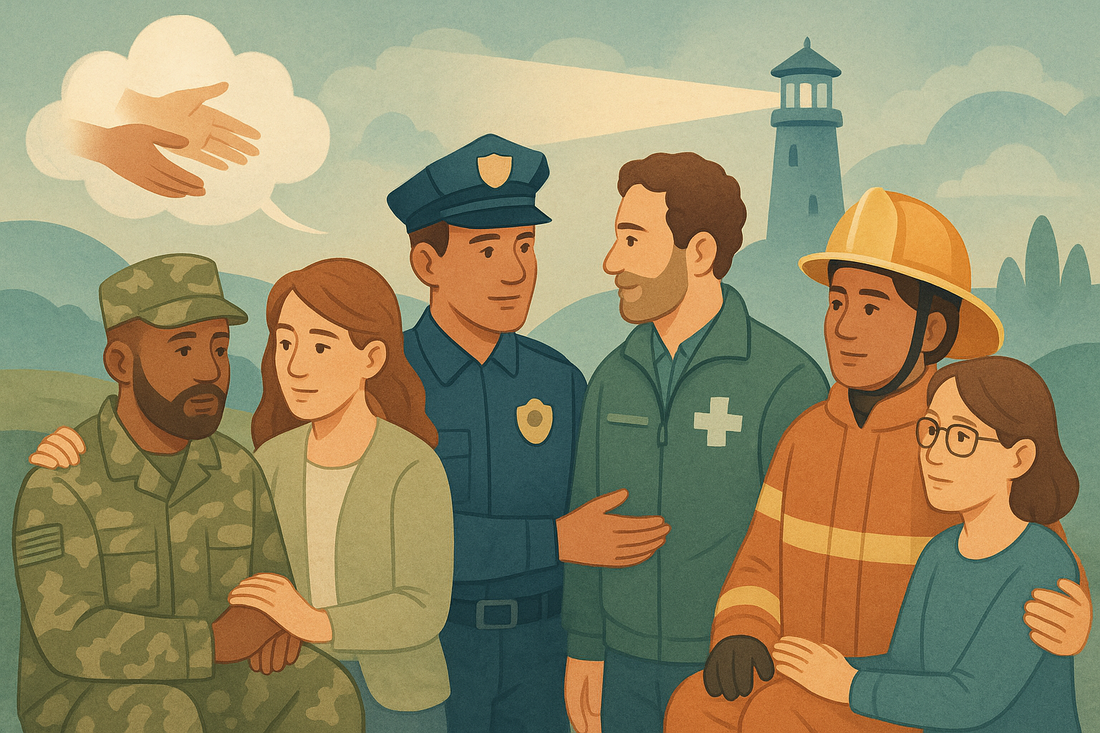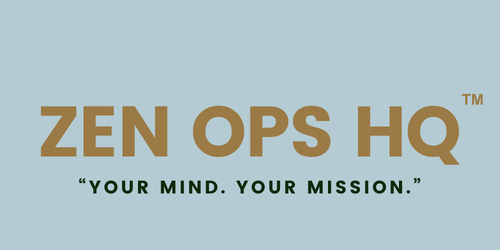
Symptoms of Emotional Dysregulation (When you're not feeling ok) — and When to Reach Out for Help
Symptoms of Emotional Dysregulation (When you're not feeling ok) — and When to Reach Out for Help
High-stakes service and caregiving roles carry repeated exposure to stress and trauma. Over time, this can disrupt the brain–body systems that help regulate emotions, making feelings more intense, longer-lasting, and harder to recover from. Actionable care and official resources are available below.
Have a conversation with your loved ones, share with them what your and their stressors are, and when they should reach out for help on your behalf. Create an agreed-upon action plan. The more awareness there is around the subject, the more effectively you'll be able to handle any situation that unfolds in your personal experience.
Get help now
If you or someone you’re supporting is in immediate crisis:
- Call or text 988 and press 1 for the Veterans Crisis Line (free, confidential, 24/7).
- Or chat/call via VeteransCrisisLine.net.
You do not need to be enrolled in VA benefits to use the Veterans Crisis Line.
Why this matters
National health authorities describe common stress reactions and symptom clusters in trauma-exposed populations (e.g., hyperarousal, intrusive memories, avoidance, mood/cognitive changes). Recognizing these patterns early allows you to seek support sooner and reduce downstream impact on sleep, relationships, and work.
What emotional dysregulation can look like
Shared signs (most people)
- Intense, rapidly shifting emotions that feel hard to “turn down” (short fuse, sudden tears).
- Hypervigilance/startle, poor concentration, sleep changes, social withdrawal, or loss of interest.
- Physical stress symptoms (headaches, GI upset, muscle tension) that track with emotional strain.
Veterans & Service Members
- Re-experiencing (nightmares/flashbacks), avoidance, negative mood/cognition changes, and arousal/reactivity (irritability, reckless behavior)—the hallmark PTSD clusters described by VA/NIMH.
First Responders
- Occupational exposure to critical incidents with cumulative stress, sleep disruption, moral injury, and secondary trauma; structured stress-management before/during/after deployments is recommended.
Caregivers
- Caregiver strain—emotional exhaustion, guilt, resentment, isolation—often alongside financial and role strain; VA caregiver supports and skills groups can help.
When to reach out (sooner is better)
- Symptoms persist beyond two weeks, escalate, or impair work, school, relationships, or safety.
- Thoughts of self-harm or feeling unable to keep yourself/others safe (use 988 Press 1 or call 911).
- Reliance on alcohol or drugs to sleep or “get through the day.”
- You are a responder heading into or returning from deployment and want to develop preventive skills/post-event reset.
- You are a caregiver, and strain is affecting your health or care quality.
Evidence-based self-regulation skills you can start today
- Breathing & relaxation drills (paced breathing, cue-controlled relaxation) to lower arousal and improve impulse control.
- Sleep and light routines (consistent schedule, wind-down, daylight exposure) to improve stress tolerance.
- Operational checklists before/during/after difficult calls (hydrate, brief/defuse, rotate tasks, buddy checks).
- Structured problem-solving & boundaries for caregivers (time-blocking, respite planning, resource lists).
*These strategies support day-to-day stability but are not a substitute for professional care.
Official resources & downloadable handouts
Immediate help & Veteran-specific
- Veterans Crisis Line (988 → Press 1) — phone, text (838255), and chat.
- What is 988? — background and how it works.
- Call/Chat options — free, confidential, 24/7.
- VA National Center for PTSD — education, self-help tools, treatment info.
- VA Research on PTSD — treatment progress & evidence-based.
First Responders
- SAMHSA Tip Sheet: Preventing & Managing Stress (PDF)
- SAMHSA Guide: Managing Stress for Disaster & First Responders (PDF)
Caregivers
- VA Caregiver Support Line — call 1-855-260-3274.
- Caregiver Support Line: Handouts & Self-Care Topics
- Caregiver Educational Series
General stress, anger, and mood regulation
Legal & Compliance Disclaimers
Medical & Professional Advice
The information in this article is provided for general educational purposes only and is not medical advice, diagnosis, treatment, psychotherapy, or a substitute for professional care. Always seek the advice of a physician, licensed mental health professional, or other qualified provider with questions about a condition. If you are in crisis, call or text 988 (Press 1 for Veterans) or dial 911. Inclusion of official resources is for information only and does not imply endorsement.
No Endorsement / No Affiliation
ZenOpsHQ™, Yes Universe LLC, and their members/owners are not affiliated with, sponsored, or endorsed by the U.S. Department of Veterans Affairs, the Veterans Crisis Line, SAMHSA, CDC, NIMH, the American Psychological Association, or any other referenced organization. All trademarks, logos, and brand names are the property of their respective owners and are used for identification and informational purposes only (fair use).
Products & Health Claims
ZenOpsHQ™ sells general wellness products and does not market any product to diagnose, treat, cure, or prevent any disease. No statements on this website have been evaluated by the Food and Drug Administration (FDA). Any product references are for general wellness support only and should be used as directed; discontinue use and consult a professional if adverse reactions occur.
Liability Limitation
To the maximum extent permitted by law, ZenOpsHQ™, Yes Universe LLC, and their members/owners, employees, or agents shall not be liable for any direct, indirect, incidental, consequential, or special damages arising out of or in connection with the use or misuse of the information provided here or linked resources. Users assume all risk for actions taken based on this content.
Copyright & Use of Third-Party Materials (DMCA)
This article links to government and nonprofit publications intended for public use. Where materials are © their respective owners, they remain so; limited excerpts are used for commentary/education with attribution and links to originals. If you are a rights holder and believe material has been used improperly, please email our designated agent at wingedsupport@zenopshq.store with the URL and details; we will review and respond promptly pursuant to the DMCA.
External Links
Links to external sites are provided for convenience and informational purposes; they do not constitute an endorsement. We do not control third-party content and are not responsible for its accuracy, legality, or content. Refer to each organization’s notices and privacy policies.
Jurisdiction
This site is operated from the United States. Access from other jurisdictions is at the user’s initiative and risk. If you are outside the U.S., contact your local emergency number or mental health services for crisis assistance.
Terms Acceptance
By using this site, you acknowledge and agree to these disclaimers and to our Terms of Service and Privacy Policy. If you do not agree, please discontinue use of the site.

